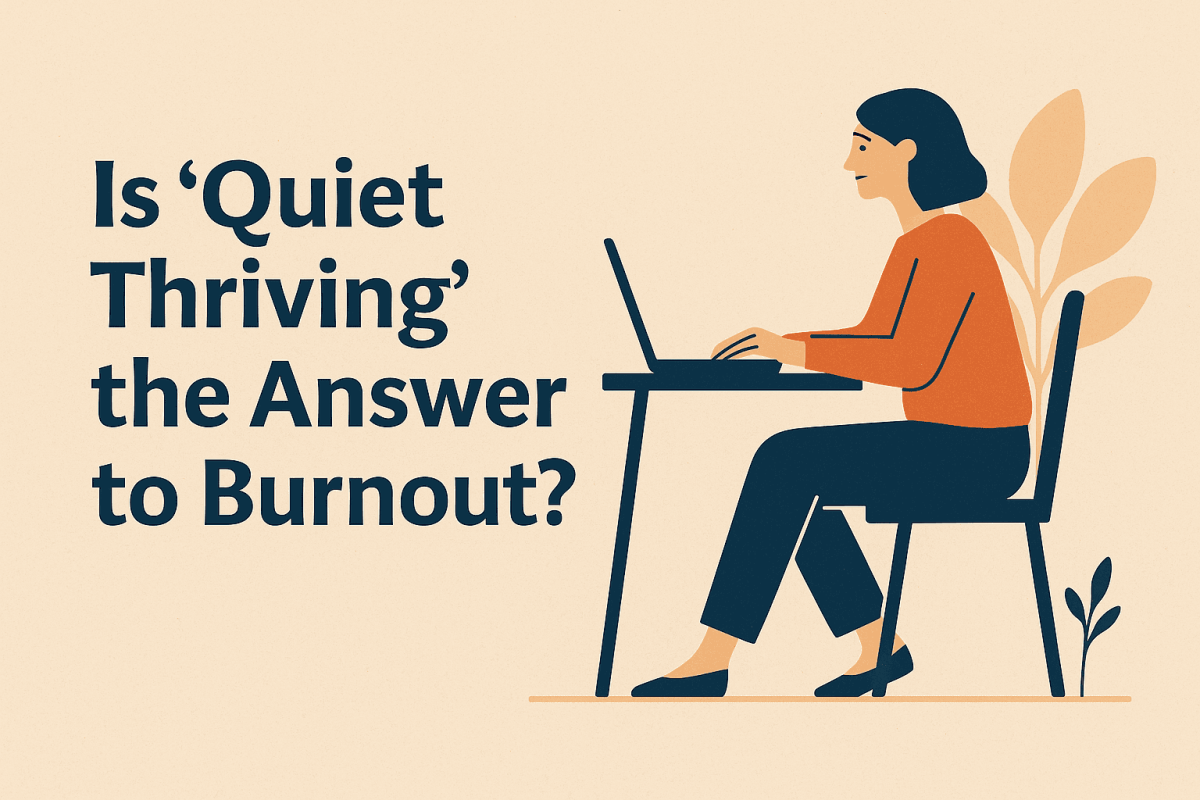For a while, “quiet quitting” dominated workplace headlines. The idea was simple: people stayed in their jobs but did only the bare minimum. It was painted as a withdrawal, a symptom of disengagement.
Now a new phrase is circulating — quiet thriving. And it offers a more hopeful perspective.
Instead of stepping back, quiet thriving is about staying engaged while protecting wellbeing. It recognises that people don’t just want to survive their work; they want to find ways to make it meaningful and sustainable.
What does quiet thriving look like?
Employees who practise quiet thriving take small but deliberate actions to make work more fulfilling. That might include:
- Setting clearer boundaries around working hours.
- Reframing routine tasks to connect with a bigger sense of purpose.
- Looking for “micro-projects” to build skills and variety.
- Finding satisfaction in steady, consistent contribution rather than chasing constant recognition.
It doesn’t mean doing less — it means doing work in a way that supports energy and balance.
Why does it matter now?
Post-pandemic, many people reassessed their priorities. Remote and hybrid work blurred boundaries, and burnout rates soared. Surveys from organisations like Gallup and the American Psychological Association show declining engagement and rising stress.
In this climate, quiet thriving has become more relevant. It’s a way for individuals to stay productive without sacrificing wellbeing, and for organisations to support their people without demanding unsustainable effort.
A risk of misunderstanding
The challenge is that quiet thriving can be mistaken for disengagement. If someone is less visible — leaving on time, working more steadily — a manager might assume they’re “quiet quitting.” In reality, they may be among the most reliable and consistent performers.
Equally, there’s a risk for employees who get too comfortable. Thriving quietly shouldn’t mean standing still. The best approach combines healthy boundaries with ongoing growth — informal learning, short courses, or cross-team projects that build skills over time.
The business case
For employers, the message is clear: recognising and rewarding only high-visibility or overtime work misses the point. Sustainable engagement is where long-term value lies. Companies that back wellbeing and steady contribution often see lower turnover and higher productivity.
Burnout is costly, both financially and personally. Encouraging quiet thriving — through autonomy, reasonable expectations, and recognition of consistent quality — helps build a healthier, more resilient workforce.
Final thought
Quiet thriving isn’t complacency. It’s a deliberate stance: caring about your work, guarding your wellbeing, and contributing in a way that lasts. For individuals, it offers a healthier way to stay engaged. For employers, it’s a reminder to value substance over show.
In a world where burnout has become all too common, that feels like a shift worth paying attention to.
Dr Denise Taylor is a Chartered Psychologist and writer on careers, ageing, and later life. She has written seven books and is widely recognised for her expertise on work and retirement.





